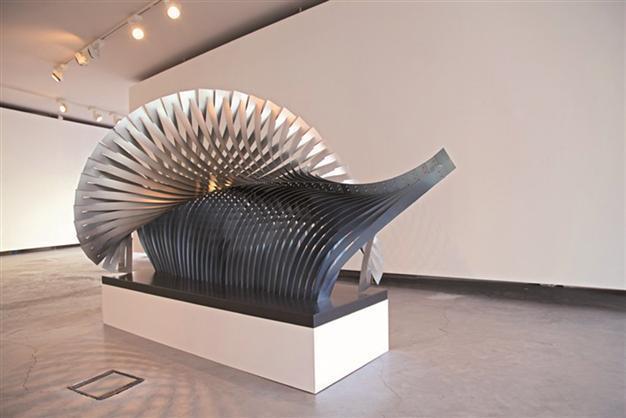Koman’s ‘Infinity-Minus-One’ on display at Istanbul gallery
ISTANBUL

Throughout his work Koman investigates the nature of his materials, exposing the inner structure of stone, metal, clay and wood. His experimental approach is visible in ‘Infinity-Minus-One” series, the formal structure of which challenges the flexibility of the material used.
The Egeran Gallery in Karaköy, Istanbul is currently displaying a groundbreaking exhibition of four sculptures from İlhan Koman’s “Infinity-Minus-One” series, which the artist developed in the late 1970s. Produced in collaboration with the İlhan Koman Foundation, these sculptures represent the first-ever realization of the series according to the artist’s original plans, and an important step in Turkish art history.
Koman (1921-86) was a major figure in the history of modern Turkish art. His sculptures – both monumental public works and smaller-scale series – explore the possibilities of form and the nature of materials. Driven by scientific ideas and a strong connection to nature, Koman’s abstract sculptural forms are rooted in minimalism and driven by a desire to discover “the unknown within the known.”
Art and scienceIn many ways the “Infinity-Minus-One” series is the perfect expression of Koman’s interests. Inspired by kite tails, this body of work explores the infinite possibilities of a simple structural idea: infinity minus one. This structural idea is translated into three dimensions, with each work representing a derivative of this concept.
Koman was born in Edirne, Turkey, in 1921. After graduating from Istanbul’s Mimar Sinan Academy of Fine Arts he went to Paris on a state scholarship for further studies at the Academie Julian. In 1951 he returned to Turkey and taught at the Istanbul Academy until moving to Sweden in 1958. There Koman renovated an old sailboat, the M/S Hulda, aboard which he lived and worked Drottningholm. He taught at Stockholm Academy of Fine Arts (Konstfackskolan) until the end of his life, in 1986.
Koman exhibited his work in many countries, and is represented in several museum collections. In 1965 Koman began basing his work on invented, diverging geometrical forms. Many of these have kinetic properties, such as flexible, three-dimensional Moebius strips and polyhedra. He developed these forms as prototypes in various materials, with plans to realize them as large-scale projects.
Throughout his work Koman investigated the nature of his materials, exposing the inner structure of stone, metal, clay and wood. His experimental approach is particularly visible in the “Infinity-Minus-One” series, the formal structure of which challenges the flexibility of the material used.
Koman produced prototypes in aluminum, wood and stainless steel, in the process discovering that these materials did not have the inherent elasticity needed to fully express his ideas. His final determination was to produce the work in titanium, which has been anodized blue on one side in order to show the number of turns or waves that form the underlying structure of the work.
Much of Koman’s work remains in Sweden as full-scale monuments.
